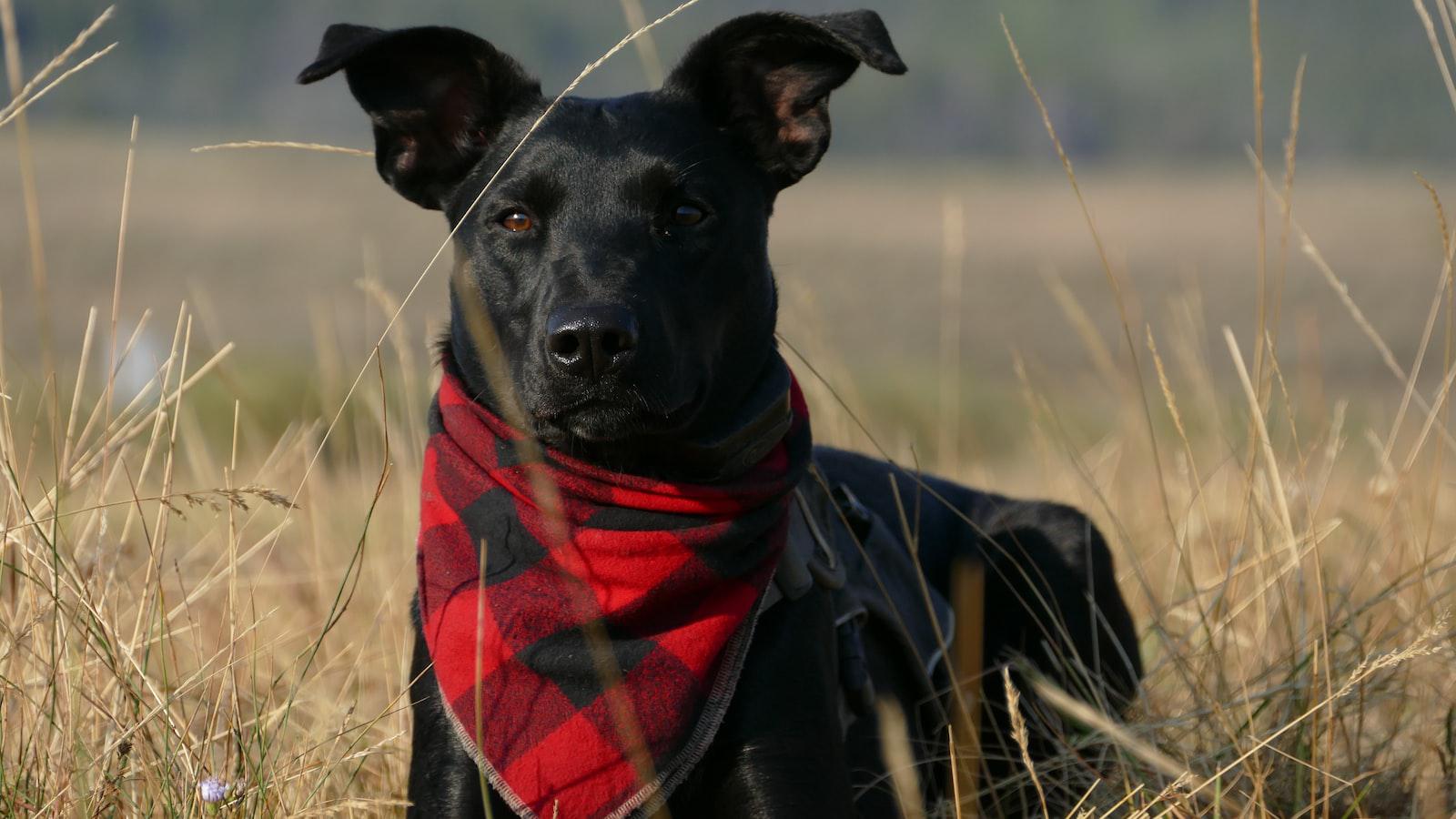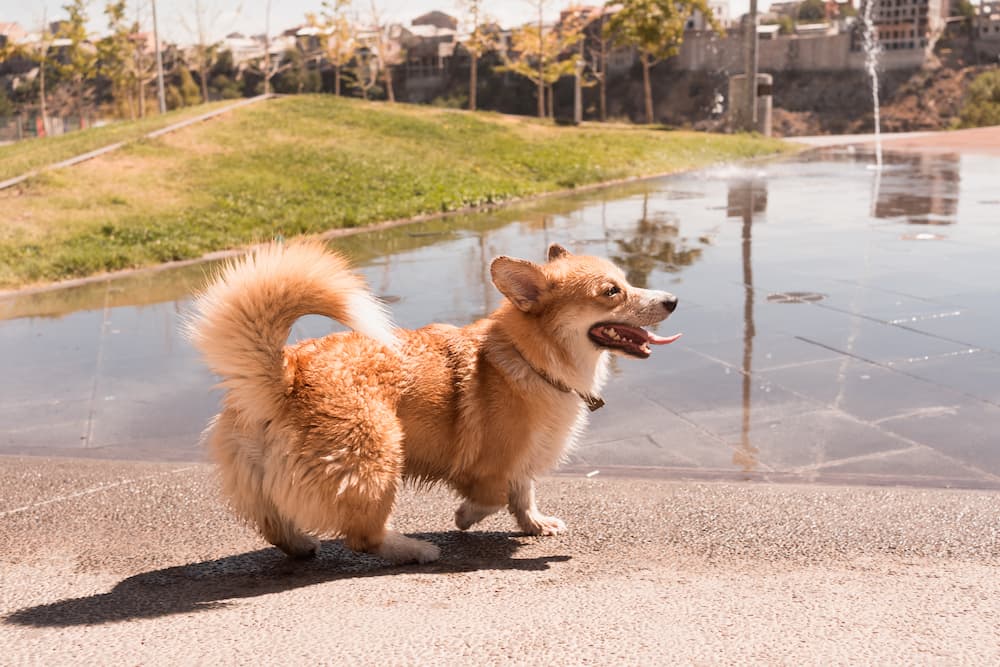Have you ever wondered why dogs tuck their tails between their legs?
It’s a peculiar sight, isn’t it?
One minute, your furry friend is wagging their tail like a propeller, expressing sheer joy and excitement, and the next minute, it disappears, tucked neatly between their hind legs.
Have you ever asked questions like, “What are they trying to tell us?” or ”Is something wrong?”
Read on to have those questions answered.
Why do Dogs Tuck Their Tails?
Have you ever wondered why dogs tuck their tails?
It’s a common behavior that can occur in various situations, and it often serves as a way for dogs to communicate their emotions.
Here are a few reasons why our furry friends may tuck their tails:
Fear or Anxiety: Just like humans, dogs can experience anxiety and fear too.
When dogs feel threatened or scared (either by loud noises, unfamiliar environments, or even certain individuals), they may instinctively tuck their tails to protect themselves.
This behavior helps them to appear smaller and less noticeable, potentially reducing the perceived threat.
If you notice your dog’s tail is tucked, it could be a sign that they need reassurance and a calm environment.
Aggression: Tucking their tail can also be a sign of aggression in dogs.
While this may seem contradictory, some dogs tuck their tails when they are on the offensive.
It’s their way of preparing for a potential fight or displaying dominance.
If you encounter a dog with a tucked tail and other signs of aggression, it’s essential to give them space and avoid any confrontations.
Submission or Submission-seeking: In some cases, dogs might tuck their tails as an act of submission.
This behavior is often seen when one dog wants to show deference to another, in order to avoid conflict or aggression.
In these situations, tail tucking accompanies a lowered posture, ears flattened against the head, and averted gaze.
However, some dogs may also tuck their tails as a way of seeking reassurance or comfort from their owners.
It’s essential to create a supportive and loving environment where your dog feels secure and confident.
Pain or Injury: If your dog suddenly starts tucking their tail, it could be an indication of physical discomfort or pain.
Dogs may hide their tails to protect a sensitive area or to avoid any further pain.
Conditions such as a sore back, muscle strain, or even an injury to the tail itself could be causing them distress.
Observe their behavior closely and consult a veterinarian if you suspect any health issues.
Observing this behavior can help you gauge your dog’s comfort level in different environments or when encountering new people or animals.
It’s essential to interpret tucking the tail in context, as it can have different meanings depending on the overall body language of your furry friend.
For example, if a dog tucks their tail tightly against their abdomen while cowering and avoiding eye contact, it often indicates extreme fear.
However, in some instances, a loose and wagging tail tucked between the legs could be a sign of excitement or submission.
Paying attention to other signals such as ear position, eye contact, and body posture will help you accurately decode your dog’s emotions and intentions.
Remember that every dog is unique, and tail tucking may vary from breed to breed or individual to individual.
While some dogs may frequently tuck their tails in certain situations, others may rarely exhibit this behavior.
Always consider the overall context and familiarize yourself with your dog’s usual behavior to fully understand what they are trying to communicate.
Tips for Helping a Dog Feel More Comfortable and Confident
Here are some tips that can make a big difference in your dog’s tail tucking habits:
1. Create a safe and calm environment: Dogs thrive in an environment that is free from stress, so it’s important to provide a calm and peaceful setting.
Keep loud noises to a minimum, establish a routine, and provide a designated space where your dog can retreat to when they need some alone time.
2. Encourage positive experiences: Exposing your dog to new and positive experiences can help build their confidence.
Take them on walks to different environments, introduce them to friendly dogs, and reward them for good behavior.
This will help them associate new experiences with positive emotions, gradually reducing their anxiety and fear.
3. Use positive reinforcement: Reward-based training is an effective way to boost your dog’s confidence and strengthen your bond.
When your dog displays confident behavior, such as walking with their tail held high, give them praise and treats.
This positive reinforcement will encourage them to repeat the behavior and feel more self-assured.
Whether it is fear, submission, or physical discomfort, responding with empathy and providing a safe environment can help your furry friend feel more secure and supported.
Remember, dogs communicate primarily through their body language, so paying attention to these subtle cues is key in building a strong and trusting bond with your canine companion.
FAQ
Q: What does it usually mean when a dog tucks its tail?
A: Most often, when a dog tucks its tail, it’s a sign of fear or anxiety.
Just like humans, dogs have their own ways of communicating their emotions.
When your pup tucks its tail between its hind legs, it’s a way of saying, “Hey, I’m feeling a little scared or nervous here.”
Q: Are there other reasons why dogs tuck their tails?
A: Absolutely!
While fear is a common trigger, tail tucking can also happen when a dog is feeling submissive.
It’s their way of showing deference or respect to another dog or even a person.
Picture it as a doggy version of saying, “I mean no harm, I’m just being respectful.”
Q: Can pain or discomfort cause a dog to tuck its tail?
A: Yes, it’s essential to consider that pain or discomfort can also make dogs tuck their tails.
If they are experiencing any physical discomfort, the tail may be tucked to protect the sensitive area.
It’s like a natural instinct to guard themselves from further discomfort or harm.
Q: Are there any situations where tail tucking is a positive sign?
A: Absolutely!
Not all tail tucking is negative.
Sometimes, if a dog is extremely excited or overjoyed, they may tuck their tail as part of their enthusiastic body language.
It’s like they are trying to express their excitement all over, and the tail just can’t sit still!
Q: Are there specific dog breeds known for tucking their tails more often?
A: While tail tucking can occur in any breed, some dogs are predisposed to have naturally higher-set tails.
Breeds like Greyhounds, Whippets, and Shiba Inus, for instance, have tails that curl naturally or sit higher up due to their genetics.
So, it could appear as though they tuck their tails more frequently, even when they are relaxed or content.
Q: Can we train dogs not to tuck their tails out of fear?
A: Absolutely!
Building a trusting relationship with your canine pal is crucial.
Gradual exposure to positive experiences, socialization with other dogs and humans, and using reward-based training methods can all help the dog gain confidence and reduce fear-based behaviors like tail tucking.
Q: So, what should I do if I see my dog tucking its tail?
A: The best course of action ultimately depends on the situation.
If your dog seems fearful or anxious, it’s important to provide a safe and calm environment.
Avoid forcing them into situations that trigger their fear and consult with a professional dog trainer or behaviorist to address any underlying issues.
Q: Can I ever play around with my dog’s tail if it’s tucked?
A: It’s not recommended to play or interact with a dog’s tail if it’s tucked between its legs.
Remember, it’s usually a sign of unease or anxiety.
Respect your dog’s personal space and try to offer them comfort and reassurance instead.
Parting Words
Understanding this tail tucking behavior is like getting a crash course in decoding their secret language – those wagging tails can say so much more than we realized!
Next time you see a dog strolling by with a tucked tail, remember that it’s not always a sign of fear or submission.
Dogs, like us, express a range of emotions through their bodies.
Sometimes that tucked tail means they’re just trying to be polite or respectful, or maybe they’re feeling a bit anxious or unsure.
It’s their way of saying, “Hey, I need a little space right now, but I’m still open to wagging and being friends!”
So let’s approach these furry friends with empathy and understanding.
Take the time to observe their body language as a whole and consider the context.
Maybe their tail is tucked because they’ve encountered something a little scary or are feeling under the weather.
Whatever the reason, let’s give them the space and support they need, just like we would with our human friends.
Remember, we’re all part of the same animal kingdom, and there’s so much we can learn from our canine companions.












